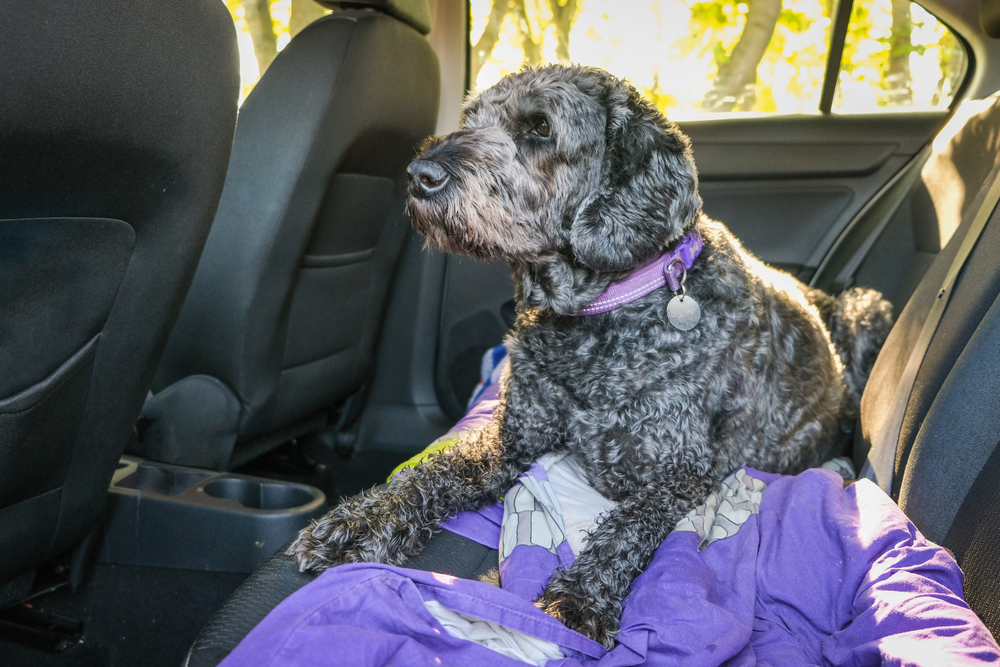When your four-legged friend pulls up lame, a multitude of conditions can be behind their limp—some as benign as an overworked muscle, and others as serious as a fractured bone or osteosarcoma. To determine the cause of their lameness, your dog needs complete physical and orthopedic exams that often include X-rays of the affected limb and surrounding joints.
Once the cause of your pet’s lameness is diagnosed, treatment can be simply strict exercise restriction and a course of nonsteroidal anti-inflammatories (NSAIDs), or surgery to repair the broken limb or affected joint.
While you cannot prevent everything that could cause your dog’s limp, you can influence their musculoskeletal health and mobility through diet, exercise, and overall care. Learn what factors can increase their risk for lameness, and the most common limping causes, to help keep your dog running on all four legs.
Risk factors for canine lameness
Certain characteristics, in addition to outside influences, can increase your dog’s risk for developing a limp. These risk factors include:
- Obesity — The joints of obese pets are heavily overtaxed and suffer a great deal of extra pressure. Obese pets are more likely to develop arthritis, muscle injuries, and ligament tears because of this additional weight.
- Age — Young puppies are more likely to suffer diet- and genetic-induced lameness, whereas older dogs are more at risk for cancer, arthritis, and neurologic conditions.
- Diet — An unbalanced diet can cause severe orthopedic issues, particularly in growing and developing large- and giant-breed puppies.
- Genetics — Poor bone structure is often genetic, and can lead to hip and elbow dysplasia, cartilage defects, or patellar luxation.
- Lifestyle — Highly active dogs are more likely to develop muscle, ligament, or tendon injuries. Growing puppies who exercise intensely are much more prone to orthopedic issues than those who are more gently active.
Common limping causes in dogs
Dogs limp from many causes, but some of the most common include:
- Traumatic accidents — Being struck by a vehicle or fighting with another animal can result in broken bones or severe, painful wounds that cause limping.
- Muscle sprains or strains — Overextended muscles often lead to mild lameness that resolves with rest.
- Paw pad and nail injuries — Cuts on paw pads, cysts between toes, or broken nails can put a hitch in your pet’s gait.
- Developmental conditions — Hereditary anatomical defects, such as hip and elbow dysplasia, can cause severe lameness in growing and adult dogs. Puppies fed improper diets of unbalanced nutrients or too many calories can grow incorrectly, or too quickly, causing a variety of musculoskeletal disorders.
- Ligament injuries — A torn cranial cruciate ligament (CCL) is one of the most common causes of hindlimb lameness in dogs. Ligaments can partially rupture, which can be healed through strict cage rest, or completely rupture, which often requires surgical repair.
- Tick-borne illnesses — Diseases transmitted by ticks, such as Lyme disease, Rocky Mountain spotted fever, and tick paralysis, can cause lameness in one or more legs.
- Arthritis — Arthritic dogs most often struggle to rise after lying down, but will warm up from their stiffness as they move around. The hind legs are most commonly afflicted with arthritis pain.
- Neurologic disorders — The nerve impulses of short-legged, long-bodied dogs, such as dachshunds and corgis, with intervertebral disc disease can fail to reach the limbs.
- Cancer — Bone cancer is extremely painful and will likely cause your dog to limp. In severe osteosarcoma cases, the bone can fracture.
When your limping dog needs immediate veterinary care
Your dog needs same-day treatment at our hospital or an emergency veterinary hospital if they have any of the following problems:
- A dangling limb
- The inability to put weight on the leg
- Heat or swelling in the affected limb
- Obvious pain
- An open wound
- A fracture or unnatural limb angle
Your dog also needs immediate veterinary treatment if they are not only limping but also have other problems, such as vomiting, diarrhea, lethargy, or depression.
How to safely transport a limping dog

Pets in pain are likely to bite when their injured area is manipulated, so handle your dog carefully to avoid further injury, and to keep yourself safe. Your dog may not seem in obvious pain, but transportation could cause discomfort, so use caution. First, muzzle your dog, if possible, using a loosely tied leash or strip of gauze, or a basket muzzle. Then, move your dog onto a blanket or sturdy board to transport them with minimal jostling. Avoid splinting the injured leg, which can do more harm than good, and try to refrain from movement during transportation.
Not all lameness is cause for immediate concern, but if your dog fails to improve with rest, or is in obvious distress, contact our Star of Texas Veterinary Hospital team as quickly as possible for an appointment.






